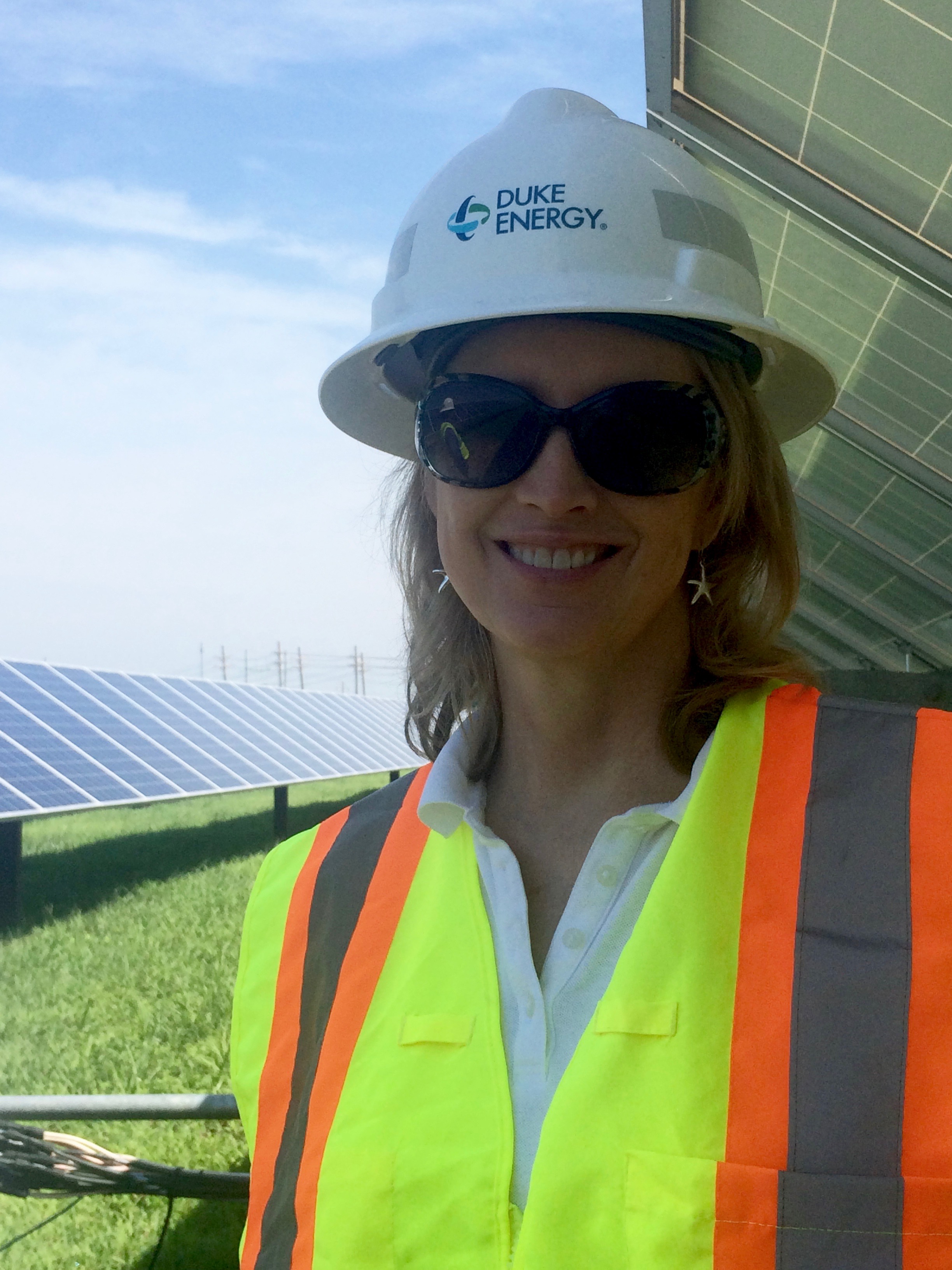Demand Demand Demand- How the Power of the Purse Drives Green Technology
I walked on the site of Duke Energy Renewables’ largest solar farm, capable of powering about 17,000 U.S. homes in rural Conetoe, North Carolina. It was tucked behind a small plot of RV homes, and was surrounded by agricultural land. The solar field was in an area of small towns and large farm plots.
We got out of the Ford truck close to 11 am, and it was stifling. The area was bug ridden, and the humidity and sheer heat made it almost unbearable to be in the field.
The George Washington University (GW) is powered by 50% solar, and as a GW alumni and Fellow with the university, Duke Energy Renewables agreed to show me where their energy comes from, along with a couple other farms in the area.
This one I visited was an 80 MW site with over 400,000 solar panels covering 800 acres. From every viewpoint, I saw solar. I climbed a hill, looking down try to maneuver through the ant mounds. I looked up and was overwhelmed with solar. I saw nothing but panels and there was no end in sight.
The farm was developed through what's called a power purchase agreement (PPA), where energy consumers (companies, utilities etc.) buy a certain amount of power at a set price for a long period of time, usually 15-25 years. The companies Corning and Lockheed Martin created the PPA to serve their North Carolina and Maryland operations, respectively.
I was standing on the largest solar farm in Duke Energy Renewables’ portfolio.
It consisted of rows and rows of large solar panels. It also had an enclosed, air conditioned monitoring room where the solar radiance and number of MW produced were displayed on screens. And as with any power plant, there was also a transmission station on the site.
Later in the afternoon I traveled about 30 minutes up the road to a smaller farm, one of three solar farms that GW, GW Hospital and American University developed in North Carolina to serve their energy needs. Together it’s called The Capital Solar Partnership. The three institutions decided that they wanted to be powered by clean energy, and found a power provider to build solar farms within their energy market, PJM Interconnection, and to sell them the power.
Each institution established a PPA with Duke Energy Renewables. In the long run, the institutions save on their energy costs, as the market price per kwh of electricity rises. It’s a way of securing clean power now and energy security in the long term.
This is an especially popular model for institutions and big companies with high energy costs, long term need, and some capital to spend. The developer, for example, Duke Energy Renewables, just needs someone to say, “yes, we will pay for power from this solar farm for the next X years,” and then can securely invest in building the new infrastructure.
As I hopped around from site to site backed by private institutions and companies, something became so clear to me: it’s all about demand. The solar farms would not have been built if these institutions and companies did not have the interest in it, for whatever reason. Maybe it is part of the sustainability goals of the organizations, or a priority of the shareholders, but for one reason or another, they wanted to invest in clean energy to power their organizations.
I thought back to other scenarios when demand made all the difference.
In 2016, I toured Sims Recycling Facility in Brooklyn, NY that processes New York City’s recyclables.
The manager explained to me that right now they have one Chinese buyer that agreed to purchase dirty plastic bags, used by consumers to carry take-out and hair products from CVS and then thrown away.
The moment that the one Chinese buyer decides that it is cheaper or preferable to buy clean plastic bags, or manufacture elsewhere, and no longer needs those dirty plastic bags they are no longer recyclable in the city.
They have nowhere else to go. No one wants them. And therefore they go to the landfill.
Recycling is not enabled by the technology at the facility, the collection process or consumer behavior, so much as the demand for the material to be used again.
We cannot count on a couple big companies to do the right thing. Or one Chinese buyer to take all of our garbage. We need to be demanding good processes- clean energy, goods that are common enough or malleable enough to have second uses. We are the demand. When we as individuals band together to each demand something good (a better box, less plastic, fewer receipts, cleaner power), we all win.
So be demanding.










